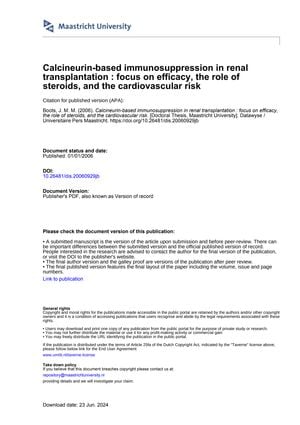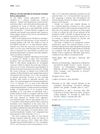Calcineurin-Based Immunosuppression in Renal Transplantation: Focus on Efficacy, the Role of Steroids, and Cardiovascular Risk
January 2006

TLDR Tacrolimus causes fewer acute rejections than cyclosporin A in kidney transplants but doesn't necessarily improve kidney function after one year; cardiovascular risks and side effects vary between the two drugs.
Cyclosporin A (CsA) is an immunosuppressive agent widely used in renal transplantation, which acts by binding to cyclophilin and inhibiting the phosphatase activity of calcineurin, thus preventing T-cell activation. The document discusses the efficacy of CsA and tacrolimus (TAC), another immunosuppressant, in renal transplantation, their impact on cardiovascular risk factors, and the potential benefits of converting from CsA to TAC after one year post-transplantation. It is noted that TAC is associated with fewer acute rejections than CsA, but this does not necessarily translate into improved renal function one year post-transplantation. The document also addresses the side effects of these immunosuppressants, with CsA inducing hypertrichosis in most patients, while TAC is associated with hair loss in a minority. Cardiovascular disease is a major cause of mortality post-transplantation, and the document suggests that the risk factors for cardiovascular disease in the renal transplant population are likely underestimated. The document raises questions about the impact of steroids and TAC on glucose metabolism, the feasibility of early steroid withdrawal, and the safety and benefits of converting from CsA to TAC in terms of cardiovascular risk, renal function, and quality of life.


